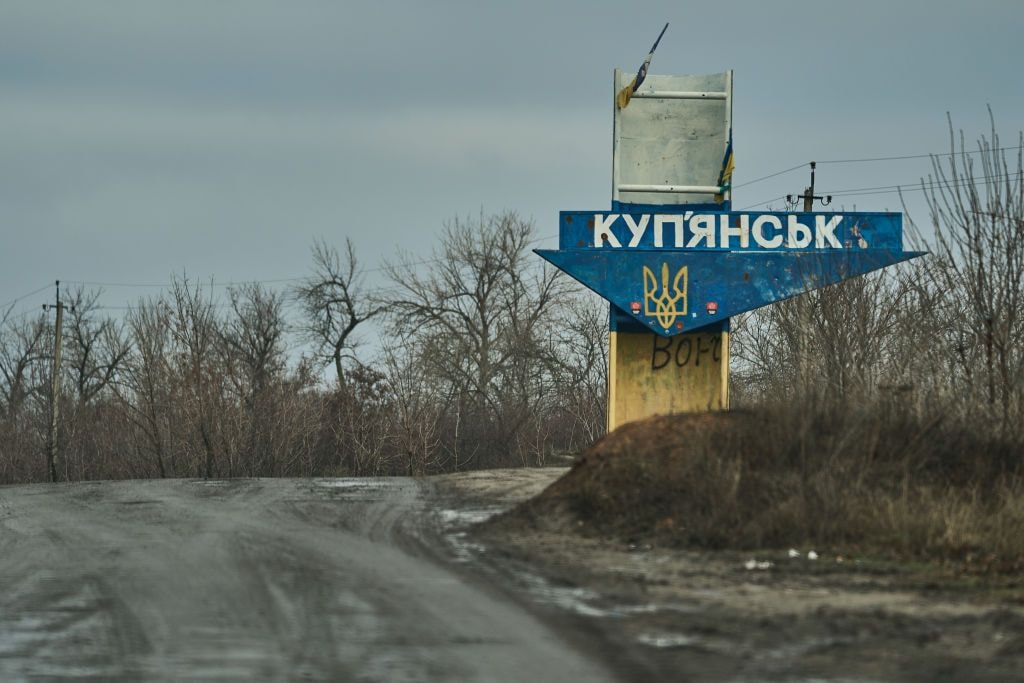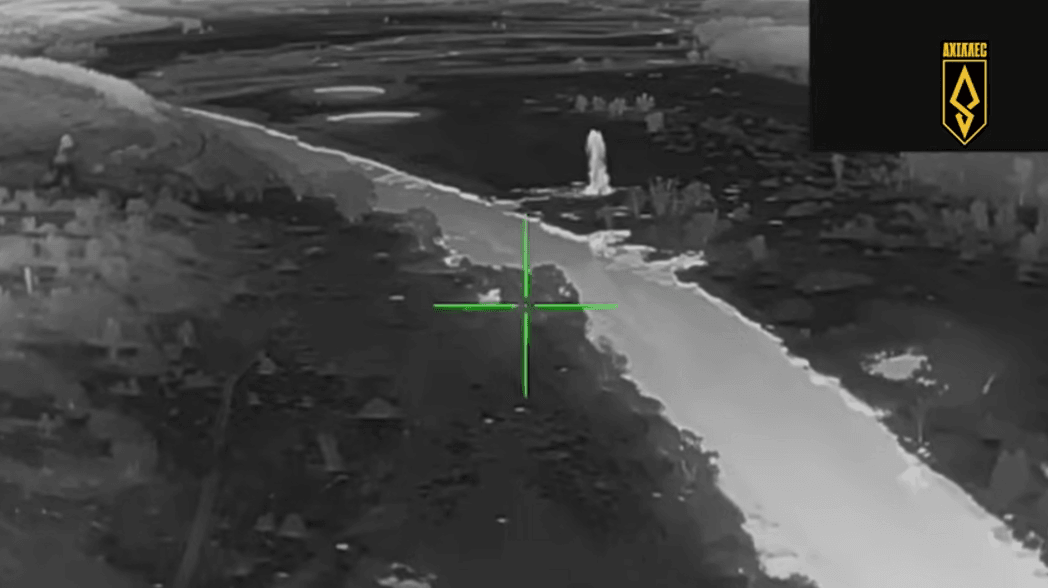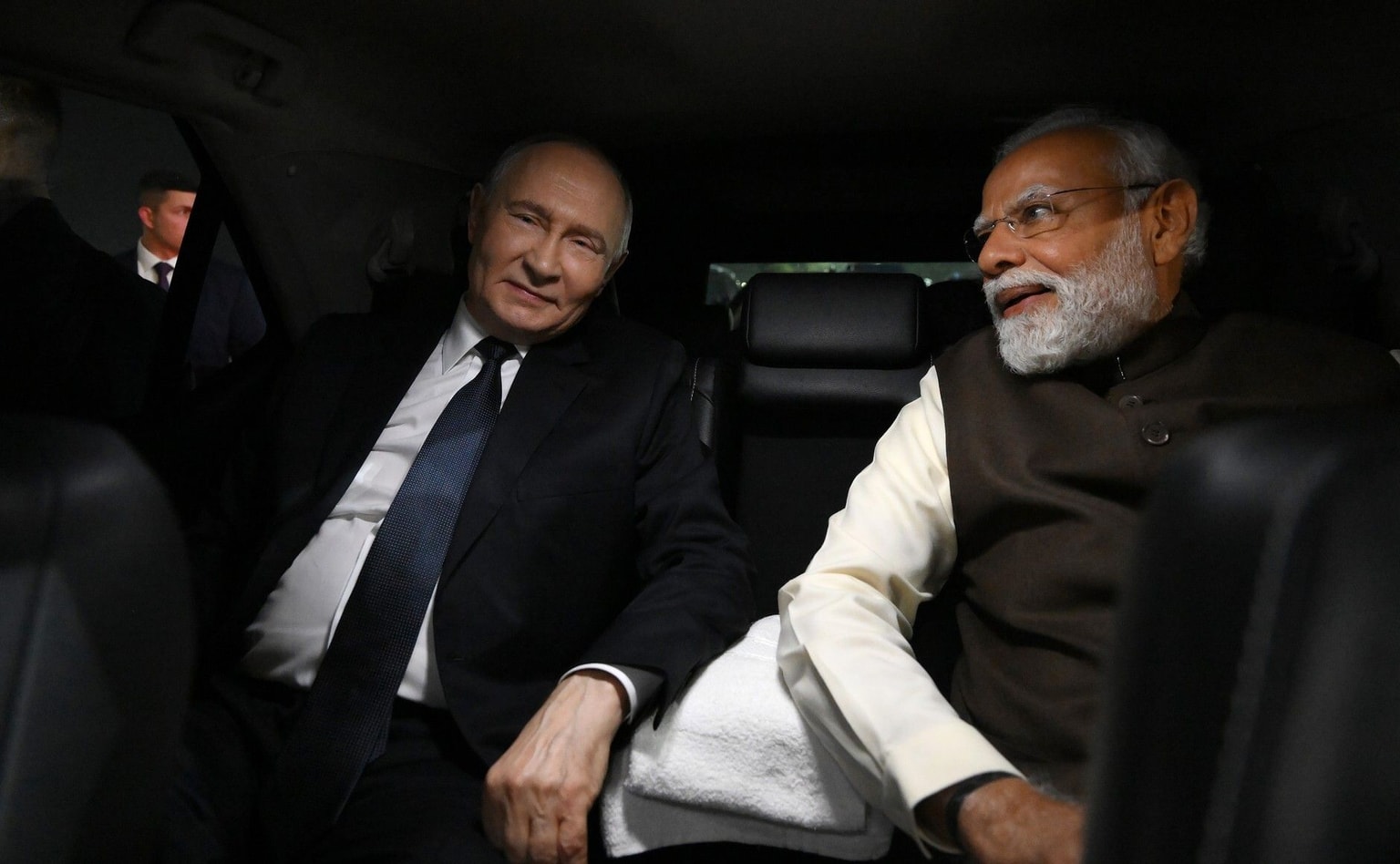
‘Don’t overreact’ — Oreshnik missile isn’t as new as Russia claims, experts say
Russia’s Oreshnik missile isn’t as new as Vladimir Putin claims.
Russia's President Vladimir Putin visits Uralvagonzavod, the country's main tank factory in the Urals, in Nizhny Tagil, Russia on Feb. 15, 2024. (Alexander Kazakov/POOL/AFP via Getty Images)
Russian President Vladimir Putin on Nov. 21 announced his country had launched a new type of missile in an attack on Ukraine, a demonstration of military might meant to deter Kyiv's allies from further support against his full-scale invasion.
"There are currently no ways of countering this weapon. The missiles attack targets at a speed of 10 Mach, that's 2.5-3 km per second," he said.
"We are ready for any developments. If anyone still doubts this, they shouldn't. There will always be a response."
Putin said the "new missile" was called "Oreshnik," but analysts and officials have since questioned the novelty of the weapon, as well as how effective it could be to prevent allies' support of Ukraine.
What is the Oreshnik missile?
According to Putin, Oreshnik, which means "hazel" in English, is a new invention that Western air defense systems would not be able to intercept.
The Oreshnik is designed to carry nuclear weapons. However, Putin said it was not armed with a nuclear warhead during this attack.
"In combat conditions, a test was carried out of one of the latest Russian intermediate-range missile systems. In this case, with a non-nuclear hypersonic version of a ballistic missile," he said in a live speech on Nov. 21.
The Oreshnik described by Putin is so new that barely anything is known about it other than what he claimed during his speech.
The reality however, appears to be slightly different.
"I'd be extremely shocked if this missile system had more than 10% new parts," Fabian Hoffmann, a defense expert and doctoral research fellow at the University of Oslo, told the Kyiv Independent.
"I think basically they just took apart the RS-26 or just cannibalized it, and then put together this new missile with a couple of upgrades, and a new paint job."
The RS-26 Hoffman refers to is the RS-26 Rubezh, of which quite a bit is known.
First produced in 2011, and successfully tested in 2012, the Rubezh is a 36,000 kilogram, nuclear capable, intermediate-range ballistic missile (IRBM) with a known range of 5,800 kilometers.
Its declared but undemonstrated range of 6,000 kilometers would only just nudge it into the category of an intercontinental ballistic missile (ICBM).
Its development and deployment was actually halted in 2018 in favor of the Avangard hypersonic glide vehicle.
The Rubezh is equipped with a MIRV payload, which stands for Multiple Independent Reentry Vehicles, which can be seen in videos of the attack on Dnipro.
Footage shows multiple projectiles hitting the ground, but without the large explosions normally associated with conventional missiles or payloads, suggesting it was carrying essentially a dummy warhead.
On Nov. 22, HUR provided further details of Oreshnik, claiming it is actually just a different name for a previously known missile called "Kedr," translated as "cedar," which Russia tested in October 2023 and June 2024.
The missile that struck Dnipro was equipped with six warheads, each containing six submunitions, and reached speeds exceeding Mach 11 (around 13,500 kilometers per hour) as it descended, HUR added.
"I think it's really important that we don't overreact," Hoffman said, adding the missile itself isn't anything particularly new despite what Putin said on Nov. 21.
"I like his 'hypersonic' comment — of course he had to put that in, but every medium-range ballistic missile will reach hypersonic velocity at one point, so this is just nothing," he adds.
A U.S. official speaking on condition of anonymity echoed the sentiment, telling the Kyiv Independent that while "we take all threats against Ukraine seriously, it is important to keep a few key facts in mind."
"Ukraine has withstood countless attacks from Russia, including from missiles with significantly larger warheads than this weapon.
"Let me be clear: Russia may be seeking to use this capability to try to intimidate Ukraine and its supporters, or generate attention in the information space, but it will not be a game changer in this conflict."
What is potentially new is the global geopolitical situation, the level of tension, and the threats of escalation.
What Oreshnik'sis deployment meant to achieve?
The deployment of the missile came shortly after Russia adopted changes to its nuclear deterrence doctrine, which lowered the threshold for a nuclear response. The Kremlin was very clear that the doctrine changes were a signal to the West.
"While the doctrine serves as a signal to decision-makers and national security apparatuses, the missile strike is aimed at the general public," says Matej Kandrík, the executive director at the Adapt Institute.
Russia has deployed nuclear-capable missiles in Ukraine before, but Oreshnik's features, like its MRV (multiple reentry vehicle) capability, "invoke the scary, apocalyptic image of nuclear war and therefore allow our imaginations to do a lot of the work for Putin," Jenny Mathers, senior lecturer in international politics at Aberystwyth University, told the Kyiv Independent.
Russia has been employing covert or overt nuclear threats to deter international support for Ukraine since day one of the full-scale invasion. The Kremlin's "red lines" failed to influence the West from supplying tanks, fighter jets, and long-range missiles.
Putin is now attempting to demonstrate strength after U.S. and British missiles struck targets on Russian sovereign territory.
"Putin's problem is that he is running out of ways to convey this message, given all the times that he and other senior Russian officials have warned against certain courses of action… and hinted at dire consequences but then confined their escalation of the war to increasingly brutal attacks on Ukraine's civilian population and infrastructure," Mathers said.
According to Kandrik, Putin's "ideal outcome would be a prohibition on the use of U.S.-provided deep-strike weapons within its territory and restrictions on future deliveries of such systems." Mathers also sees it as an attempt to deter broader Western support for Ukraine.
Western officials denounced the IRBM launch as an escalation but also made clear that it would not deter their support for Ukraine.
"Deploying this capability will neither change the course of the conflict nor deter NATO allies from supporting Ukraine," NATO spokesperson Farah Dakhlallah said.
The calculus may change after U.S. President-elect Donald Trump takes office in January, as his team is likely to seek a quick settlement to "get out" of the conflict. It remains unclear whether the incoming president, who has often criticized military aid for Ukraine, will keep the long-range strikes policy in place if it could spark further escalatory moves by Russia.
"Putin knows that the clock is ticking for both Russia and Ukraine as we get closer to Jan. 20 and Donald Trump's return to the U.S. presidency," Mathers said.
"Therefore, what Putin needs is to convey the impression that Russia is in a commanding position and can continue to fight for as long as it needs to in order to achieve victory."
Experts say, however, that Oreshnik's launch is not the start of an escalation chain leading to a nuclear apocalypse.
"Let's keep a cool head… . We have a mechanism in place. It's called an escalation ladder with a lot of steps to go through between nuclear saber-rattling or nuclear messaging, which is what's happening now, and the nuclear first use of preemptive strike," Mathieu Boulègue, a senior fellow at the CEPA think tank, told the Kyiv Independent.
"The Russian leadership is not suicidal. The moment they start going a bit too far in nuclear escalation… this will be the end for the Russian regime."
Federico Borsari, a resident fellow at CEPA, pointed out that Russia warned the U.S. about the missile's use in advance and that Iskander and Kinzhal missiles that Russia regularly uses in Ukraine can carry a nuclear warhead as well.
Oreshnik's use "is clearly a political message," but not one indicating a nuclear escalation, he concludes.










